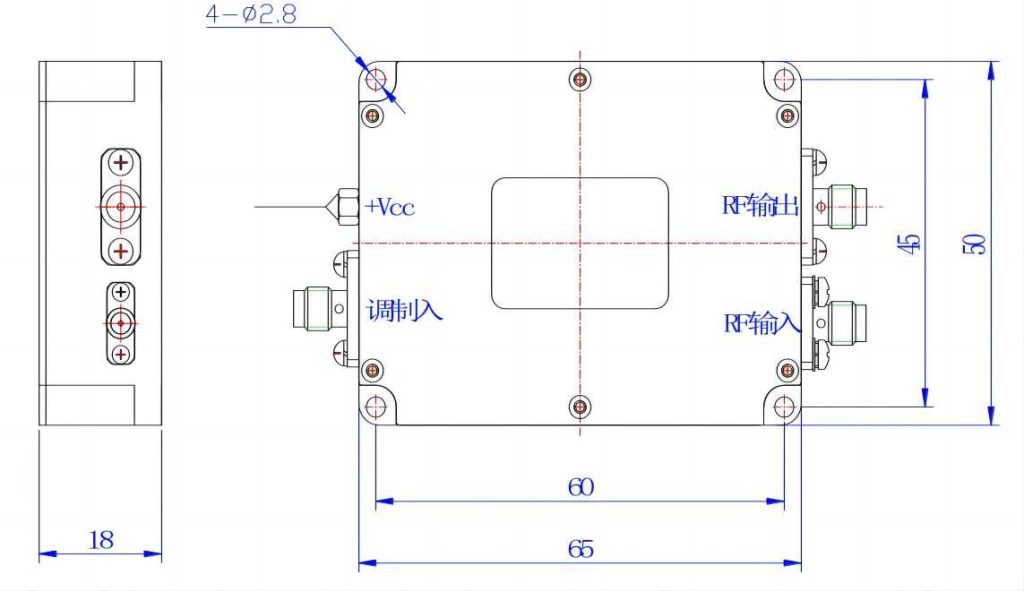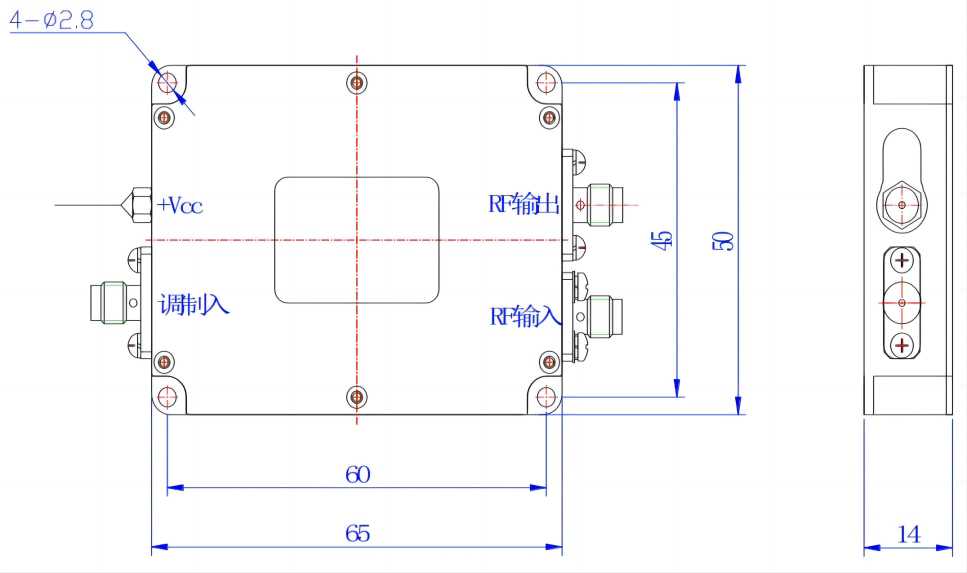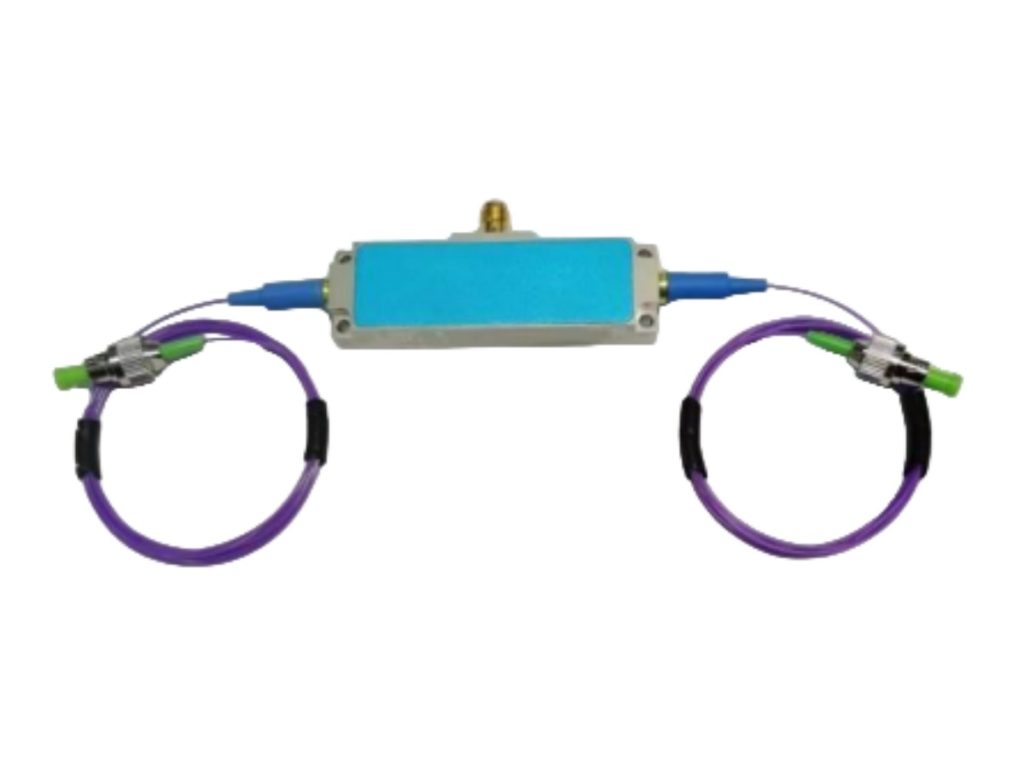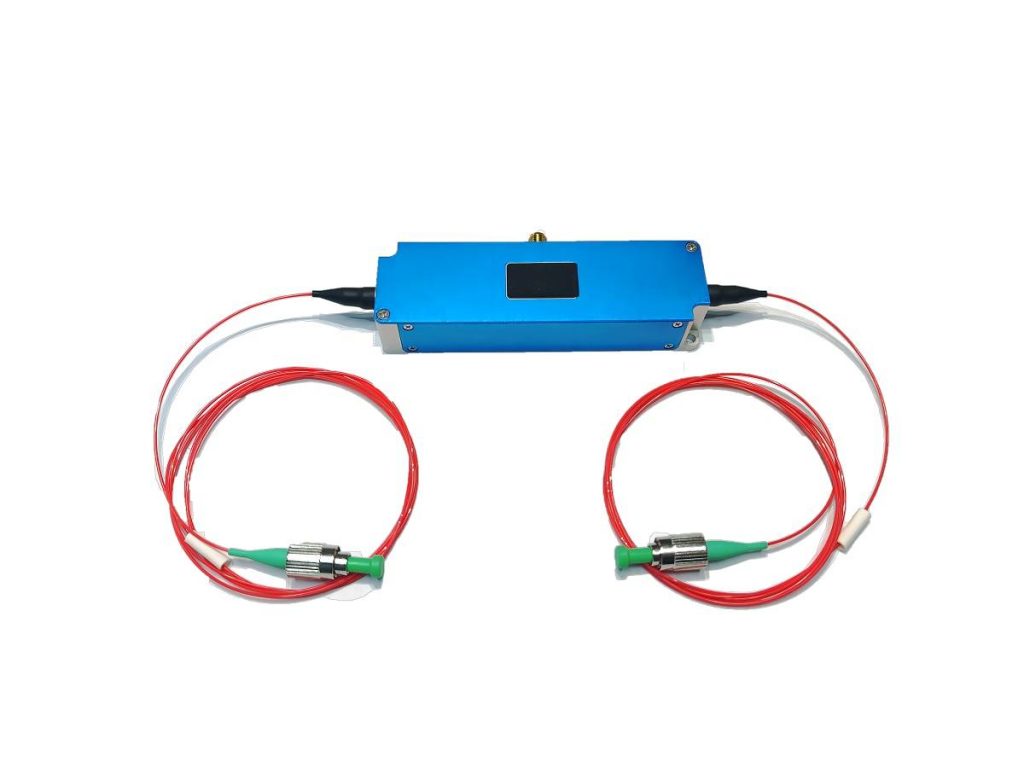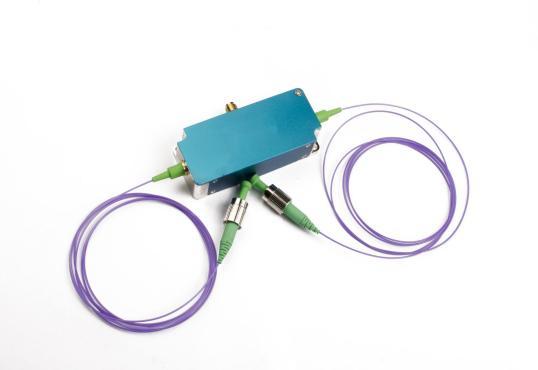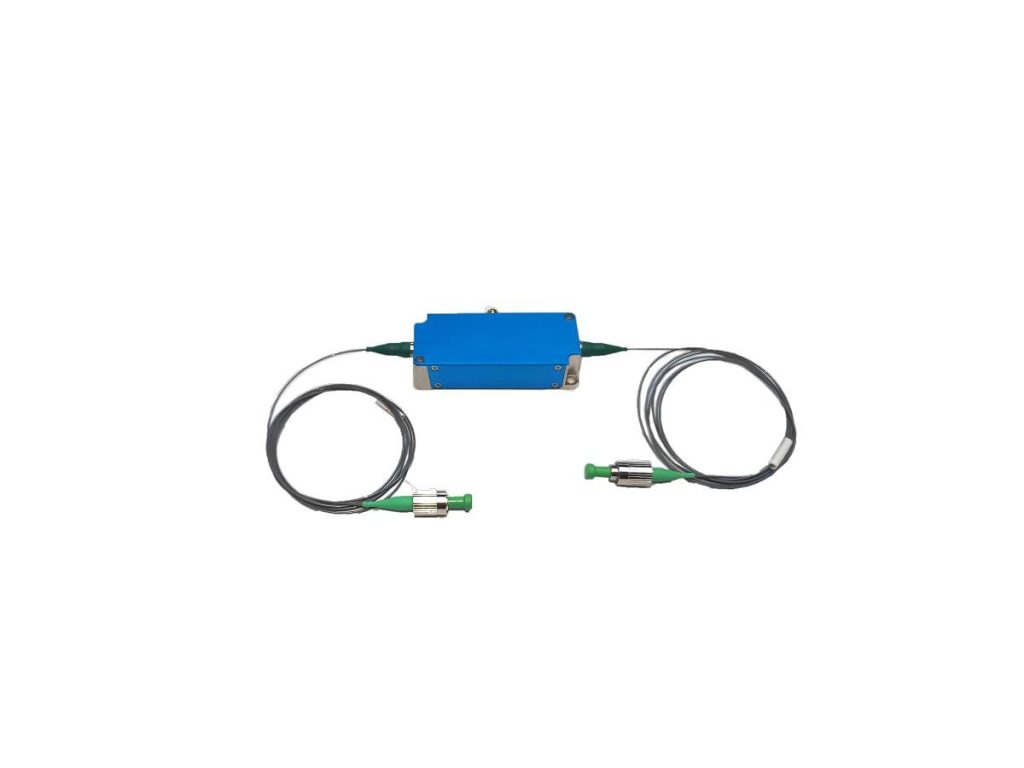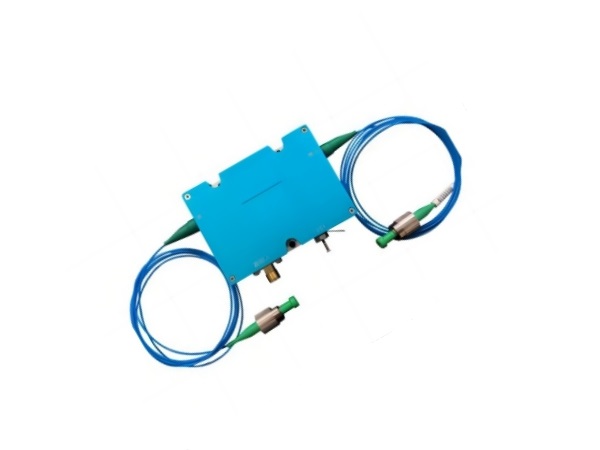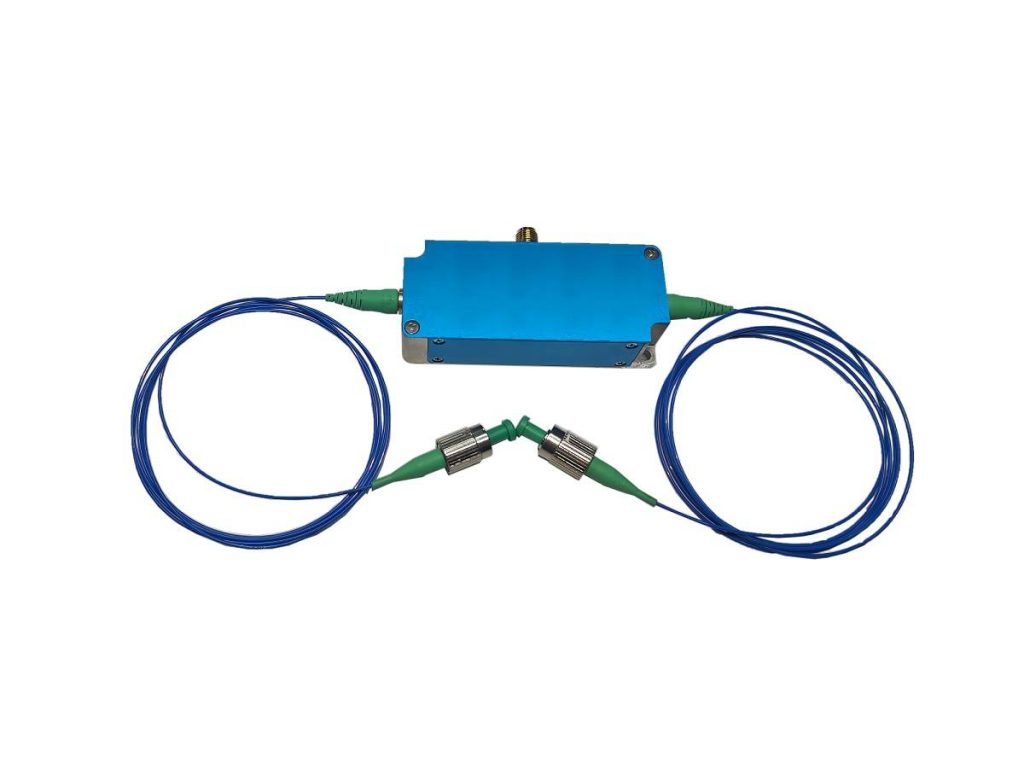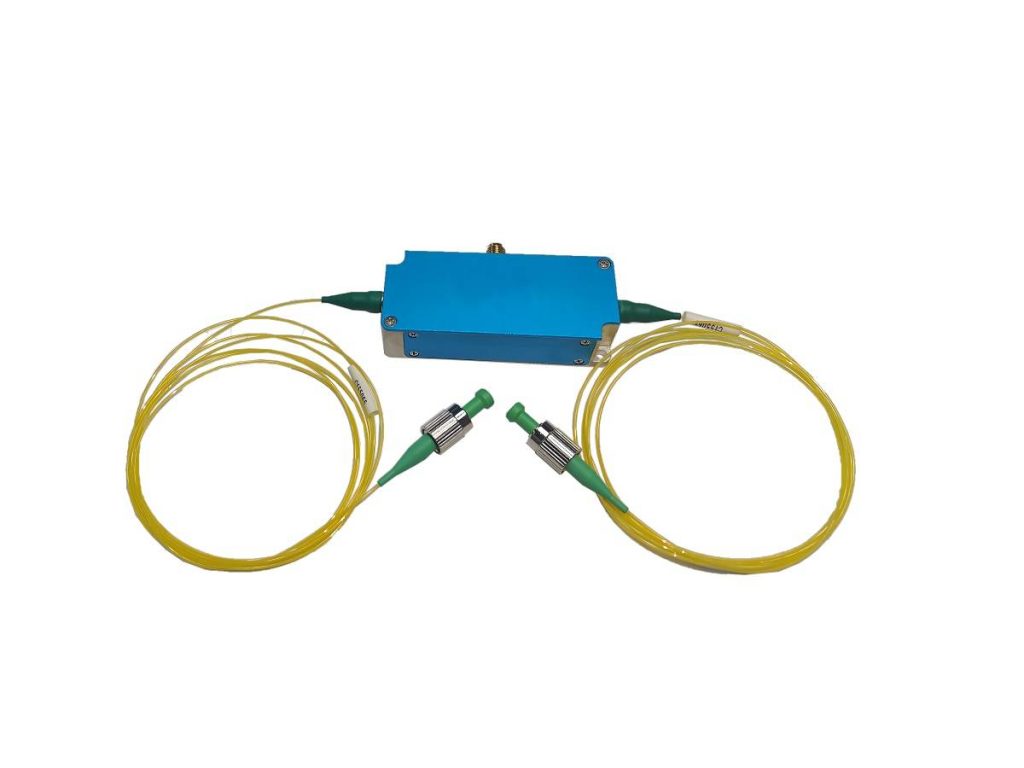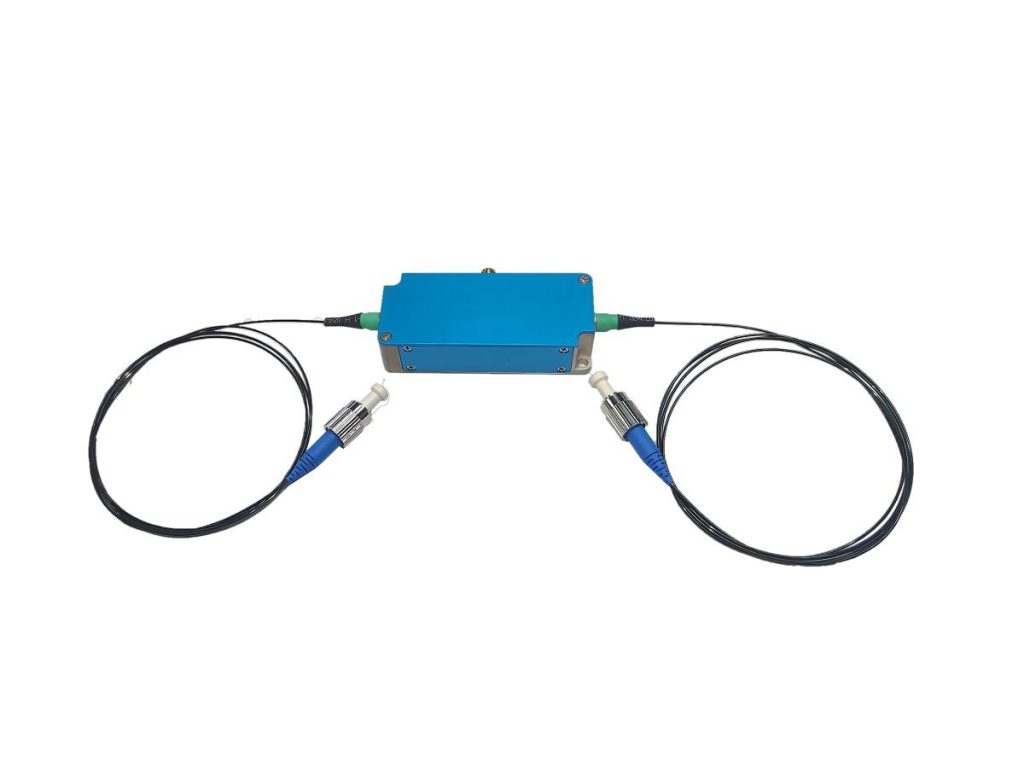
2000nm Fiber AOM Series
The acousto-optic modulator utilizes the acousto-optic effect to manipulate laser light. This effect allows for modulation of the light’s intensity and shifting of its frequency. The modulator operates across the spectrum, from visible light to infrared wavelengths. Its robust design features an all-metal construction, a compact and hermetically sealed package, and advanced packaging technology. These features combine to ensure exceptional reliability and thermal stability.
Characteristics of 2000nm Fiber AOM Series
- Short response time
- Low insertion loss
- High extinction ratio
- High-temperature stability and reliability
- Small size
Applications of 2000nm Fiber AOM Series
- Q-switched fiber laser
- Laser Doppler coherent application
- Ultra-fast laser frequency reduction menu
- Linear frequency modulation
Ordering Information of 2000nm Fiber AOM Series
This indicator is a typical optical wavelength indicator, and other wavelengths and frequencies can be selected.
| Parameter | Unit | SGTF80-2000-1P | SGTF200-2000-1P | SGTF300-2000-1PFH |
| Insertion loss | dB | <3 | <4.5 | <5 |
| Rise time | ns | <50 | <12 | <10 |
| shift frequency | MHz | 80 | 200 | 300 |
| 3dB frequency shift bandwidth | MHz | >15 | >40 | >60 |
| Wavelength | nm | 2000 (Typical value) | ||
| Optical power | W | ≤0.5 | ||
| On – off extinction ratio | dB | ≥50 | ||
| Polarization Extinction ratio (PM device) | dB | ≥20 | ||
| Polarization Dependent loss (SM device) | dB | <0.5 | ||
| Driving power | W | <2 | ||
| Fiber type | – | PM1950(PM) | ||
| Optical fiber connector | – | FC/APC | ||
| RF input joint | – | SMA | ||
| Fiber length | m | >1 | ||
| Input impedance | Ω | 50 | ||
| VSWR | – | <1.3:1 | ||
| Package | – | FA/FH | ||
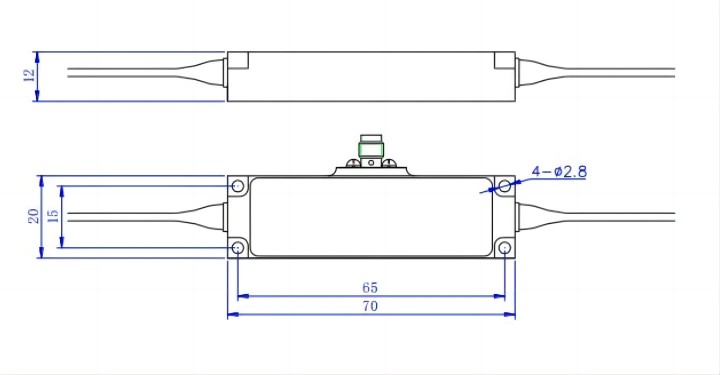
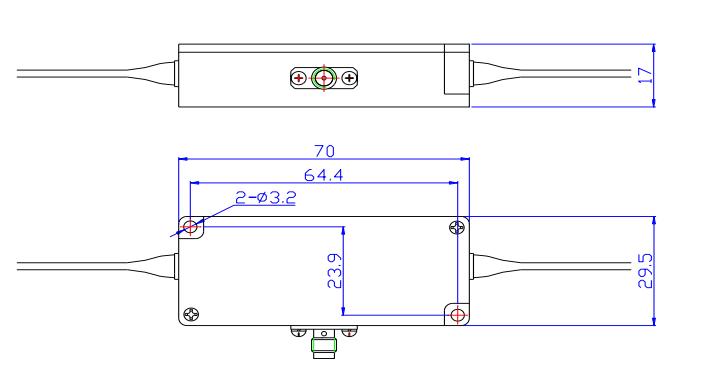
Low-power N-type Acousto Optic Driver for 2000nm Fiber AOM Series
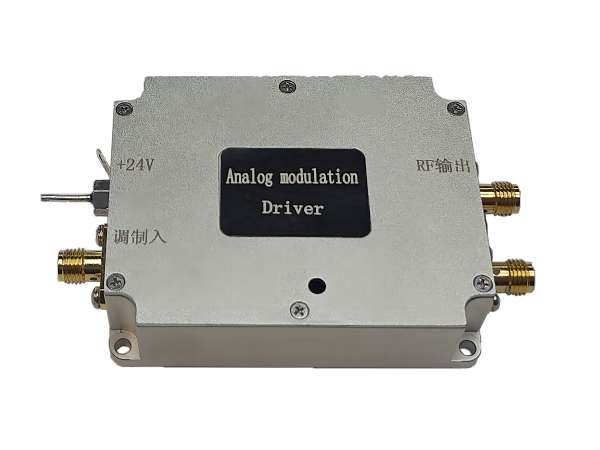
The acoustooptic driver is an electronic device that generates radio frequency (RF) signals to control acoustooptic devices, including modulators and frequency shifters, requiring less than 3 watts of power. These RF signals trigger the generation of ultrasonic waves within the device’s crystal. By adjusting the frequency and intensity of the RF signal, the driver can precisely control three key aspects of the laser beam: modulation (intensity control), deflection (direction control), and tuning (frequency control). The driver is equipped with efficient heat dissipation for reliable operation, and using a matched driver further improves temperature stability, ensuring optimal performance.
| Supporting Drive | The SGXXXX-33-N-ab model offers two functionalities: X indicates its ability to shift frequencies, while T signifies its modulation capability. The XXX represents the operating frequency, and 33 specifies the RF output power. The letter N denotes the package type. Power supply options are 24V (marked as 1) and 12V (2). Finally, D signifies digital TTL modulation capability, while A indicates analog modulation. | ||||||
| SGT80-33-N-1D SGT80-33-N-1A1 SGT80-33-N-1A5 | SGT200-33-N-1D SGT200-33-N-1A1 SGT200-33-N-1A5 | SGT300-33-N2-1D SGT300-33-N2-1A1 SGT300-33-N2-1A5 | |||||
Performance of Low-power N-type Acousto Optic Driver on Fiber AOM
- Small size
- Fast response time
- Low power consumption
- High-temperature stability and reliability
| Item | Unit | Performance | ||
| Specifications of modulation input interface | ||||
| Modulated signal input | – | Digital modulation (high level 3.3-5V; low level 0-0.2V@1k Ω) | ||
| Analog modulation (A1: 0-1V@50 Ω) | ||||
| Analog modulation (A5: 0-5V@1k Ω) | ||||
| Modulated signal input impedance | Ω | – | ||
| Interface | – | SMA | ||
| RF output interface specification | ||||
| Output signal frequency | MHz | 80 | 200 | 300 |
| Frequency stability | ppm | 20 ( 1 Special) | ||
| Output signal power | W | <2 | ||
| Rise and fall time | ns | <25 | <10 | <7 |
| Switching ratio | dB | ≥60 | ||
| Harmonic suppression ratio | dBc | >25 | ||
| Signal output standing wave ratio | – | ≤1.3 | ||
| Interface | – | SMA | ||
| Complete machine specification | ||||
| Maximum power consumption | W | 10 | ||
| Working voltage | Vdc | 24±1V(Optional 12±0.5) | ||
| Power interface | Through core capacitance (core wire is connected to positive, solder lug is connected to negative) | |||
| Package | – | N/N2 | ||
